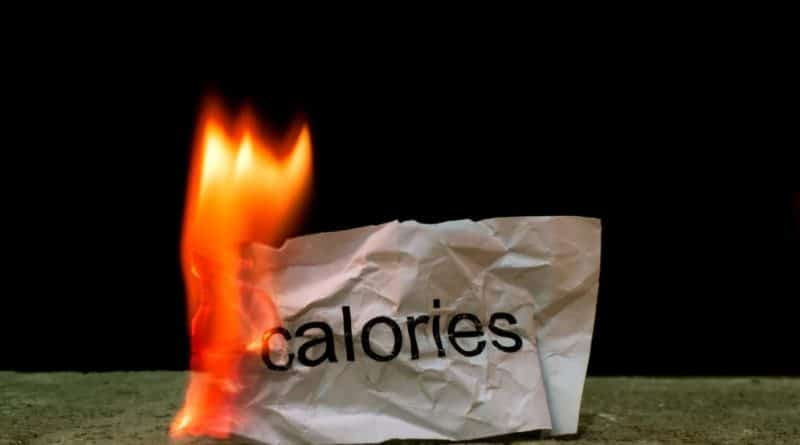Do You Know How Many Calories You Burn Every Day?
Have you ever wondered how many calories you burn every day? The truth is that we all burn calories differently based on our individual metabolism. My metabolism is different from yours and yours differs from your friends. Additionally, men generally have the ability to burn more calories at rest when compared to their female counterparts simply due to the fact that they will generally possess more lean muscle mass. So, how exactly do you know how many calories you burn every day?
Related Article: 8 Indicators That Your Caloric Intake Is Too Low
A simple way of figuring this out is by using the Harris-Benedict formula which was improved upon back in 1990[1] from previous versions. However, there are other figures you need to calculate prior in order to get an accurate picture.
Table of contents
Disclaimer: This article is for informational purposes only and is not meant to treat or diagnose any condition. It is recommended that you speak with your doctor before starting any exercise program, changing your daily nutrition, or adding any supplements to your regimen.

Figure Out Your Basal Metabolic Rate and Daily Maintenance Calories
You can think of your body like a furnace. In order for it to heat up a room or a home, it needs to constantly be burning fuel. When looking at our body the same way, we need to take the food we consume and convert it into a usable energy source. Likewise, when there is no food to break down, our body looks for areas such as fat stores in the body to break down and use as energy.
Related Article: Here Are Some Nutritional Swaps to Help You Lower Your Calories
Your basal metabolic rate (BMR) looks at how many calories you burn each day through normal everyday bodily functioning by utilizing four main components: your sex, body weight, your height, and your age. This does not, however, take into account your active lifestyle and/or workouts (that will be calculated separately from your BMR). To simplify this, think of your BMR as how many calories you’re body will burn at rest if you were to lay in bed all day and do nothing at all.
How Many Calories You Burn Every Day While at Rest
While there are many calculators you can find online, I have the formula you can use below to figure out what your BMR is (for both men and women). Simply insert your specific data into the formula using a calculator and you’ll get exactly how many calories you will burn each day doing absolutely nothing.
- BMR for men = 66 + (6.2 x weight*) + (12.7 x height**) – (6.76 x age***)
- BMR for women = 655.1 + (4.35 x weight*) + (4.7 x height**) – (4.7 x age***)
*Weight is in pounds
**Height is in inches
***Age is in years
If we were to look at an example (let’s just use my own numbers), the BMR calculations would look like the below.
My personal data:
196 pounds
5’9”
36 years old
My BMR: 66 + (6.2 x 196) + (12.7 x 69) – (6.76 x 36) = 1914.14 calories
This is great if you are looking for a roundabout figure, but we are leaving out my lifestyle as well as my weekly workout schedule. To get the most accurate representation of how many calories you burn every day, you need to factor this into your equation.
How many calories you burn every day in totality:
In order to use the Harris-Benedict method, we need to insert our activity level with the BMR we just figured out above. The number that we get will show us how many calories you burn every day at a maintenance level where you are neither gaining nor losing weight. In order to gain weight, you would need to be above this number and in order to lose weight you would need to be below this number.
Related Article: Metabolic Magic — A Deep Dive into the Benefits of MitoBurn
If you want to find out your ideal body weight, check out our free ideal body weight calculator.
The equation for such is as follows:
- Maintenance Calories = BMR x activity level
To figure out your exact activity level, you need to first define exactly how active you are on a daily/weekly basis. Below is a breakdown of the figures you are to use:
- 1.2: sedentary (little to no exercise)
- 1.375: lightly active (light exercise 1-3 days per week)
- 1.55: moderately active (moderate exercise 3-5 days per week)
- 1.725: very active (hard exercise 6-7 days per week)
- 1.9: extra active (very hard exercise/training or physical job)
Use the above to figure out your personal activity level based on your job/profession as well as your exercise level. Below, let’s put it all together (again, using my information as an example) to tie it all up and get the picture we are looking for when it comes to how many calories you burn every day.
To achieve our maintenance calories, we know we need to insert our information into the formula provided above. I would consider myself on the activity level scale above to be “moderately active.” So, I would need to use 1.55 in my Harris-Benedict formula to compute how many calories I personally burn every day. Here’s what it would look like:
My maintenance calories: 1914.14 (BMR) x 1.55 (activity level) = 2966.92 calories/day
Looking at the figure we calculated, I am just shy of burning 3,000 calories each and every day just to maintain my weight.
Using the Figure to Achieve Your Goals
Now that you have figured out precisely how many calories you burn every day by using your BMR and the Harris-Benedict formula, you can then manipulate those numbers in order to achieve your goals – such as weight maintenance, weight gain, or weight loss.
- If you want to maintain weight: eat the SAME calories calculated for maintenance
- If you want to gain weight: eat 250-500 calories MORE than maintenance daily
- If you want to lose weight: eat 250-500 calories LESS than maintenance daily
*The above numbers can be manipulated based on how quickly/slowly you see changes
How many calories do you burn every day? Give it a shot and calculate your own BMR and maintenance calories to help you achieve your health, fitness, and physique goals.
References:
- Mifflin, M. D., et al. (1990). A new predictive equation for resting energy expenditure in healthy individuals. The American Journal of Clinical Nutrition. 51(2), 241-247.


*Disclosure: This article may contain affiliate links or ads, which means we earn a small commission at no extra cost to you if you make a purchase through these links. These commissions help support the operation and maintenance of our website, allowing us to continue producing free valuable content. Your support is genuinely appreciated, whether you choose to use our links or not. Thank you for being a part of our community and enjoying our content.
PLEASE CONSIDER SHARING THIS ON YOUR SOCIAL MEDIA TO HELP OTHERS LEARN MORE ABOUT THIS TOPIC.





